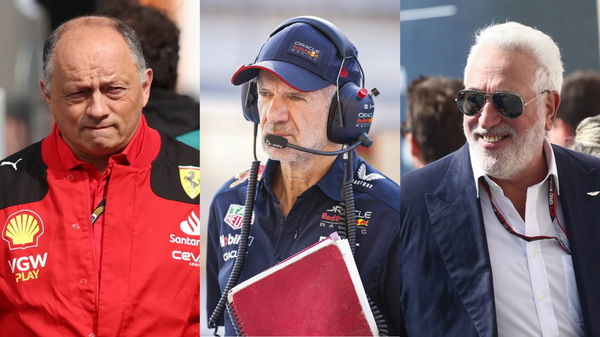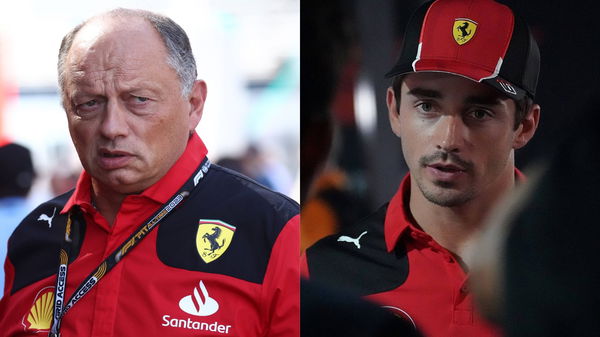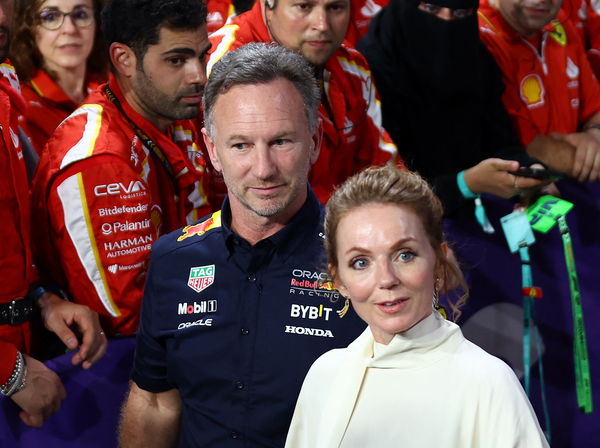Amid Accusations of Attempts to Thwart Max Verstappen & Co., Fernando Alonso Targets FIA for Shameful Antics in 2006

Follow Us

via Imago
ALONSO Fernando spa, Aston Martin F1 Team AMR23, portrait VERSTAPPEN Max ned, Red Bull Racing RB19, portrait during the Formula 1 Rolex Australian Grand Prix 2023, 3rd round of the 2023 Formula One World Championship, WM, Weltmeisterschaft from March 31 to April 2, 2023 on the Albert Park Circuit, in Melbourne, Australia – F1 – AUSTRALIAN GRAND PRIX 2023 DPPI/Panoramic PUBLICATIONxNOTxINxFRAxITAxBEL 00122006_F12023GP03AUS_JK254660
Red Bull has been invincible this season. Just a few races into the 2023 season, it became clear that the Milton-Keynes squad was heading toward a third-consecutive Constructors’ Championship. And just a few races into Max Verstappen’s ongoing nine-race winning streak, the Dutchman winning his third-consecutive Drivers’ Championship became inevitable, too. Considering how remarkable this dominance is, you would think F1 and its governing body—the FIA—would celebrate this. Rather, they’ve been accused of trying to restrict it, much like they did for Fernando Alonso and Renault in 2006.
Red Bull’s DRS advantage is one of the many aspects that makes the RB19 such a beast. There have been speculations that the FIA plans to ban the use of DRS during qualifying. This came after the FIA shortened DRS zones in Miami and Azerbaijan. What can be concluded from this is that the FIA doesn’t do too well with domination. One of the first instances this became known was during the 2006 season, and now Fernando Alonso has given his verdict on the charade.
Fernando Alonso exposes the FIA for its “politics”
ADVERTISEMENT
Article continues below this ad
Remember DAS, short for Dual Axis Steering? The 2020 Mercedes innovation allowed its drivers to change the angle of the front wheels while driving to help with tire warmup. Despite the genius behind it, the FIA banned it. Another innovation that got the FIA thinking was Renault’s Mass Damper, introduced in 2005. As per the regulations introduced that season, teams had to increase their front spring stiffness to ensure the front wing stayed close to the ground. This resulted in quite a significant amount of unwanted bouncing, affecting the cars’ aerodynamics.
💥 Fernando Alonso: "Ganamos el Mundial de 2006 a pesar de que alguien no lo quería".
👉 Sobre el Mass Damper: "Fue un dispositivo que utilizamos durante toda la temporada, pero en cierto momento sentimos presión política sobre la posición dominante que teníamos, como suele… pic.twitter.com/jWnkimy2QC
— Fórmula Directa (@FormulaDirecta) August 31, 2023
To find a way around the issue, Renault made the Mass Damper, which, as explained by Motorsport.com, was “a free-moving weight suspended within a cylinder inside the nosecone that would act in opposition to the vertical forces applied to the car.” Not only did this significantly reduce the bouncing, but it also allowed Alonso to attack curbs more aggressively. Even though other teams started adopting the innovation, the FIA subsequently banned it in 2006, owing to the current Article 3.2.2 of F1’s Technical Regulations, which states that all components that influence a car’s aerodynamic performance must be “rigidly secured and immobile.”
Trending

Liam Lawson’s Surprise Contract Clause Threatens Daniel Ricciardo’s RB Seat
April 24, 2024 11:15 AM EDT

F1 Rumor: Lawrence Stroll Offers Adrian Newey $100 Million to Poach Him From Frederic Vasseur and Co’s Interest
April 26, 2024 03:16 PM EDT

“[Charles] Leclerc Doesn’t Care About Ferrari”: F1 Insider’s Brutal Blow to Fred Vasseur & Co. Has Racing Community Lashing Out
April 24, 2024 05:00 PM EDT

Adrian Newey’s “Personal Issue” With Christian Horner the Reason Behind Red Bull Mastermind’s Exit
April 27, 2024 10:51 AM EDT

F1 Rumor: Christian Horner and Wife Geri to Publicly Reveal All Details on Leaked Chat Scandal
April 22, 2024 04:10 PM EDT
Get instantly notified of the hottest F1 stories via Google! Click on Follow Us and Tap the Blue Star.

Follow Us

Fernando Alonso & Co. Take Advantage of Groundwork Laid Down by Alpine by Last Minute Poaching
As F1 returned to Monza this weekend, Motorsport Italy asked Alonso about his memories of the 2006 Italian GP, where the Mass Damper was banned. He replied, “It was a device that we used throughout the season, but at one point, we felt the political pressure on the dominant position we had, as often happens in F1. I remember it was a surprise, but it didn’t change much in the car. We won the championship even though someone didn’t want it.” [Translated by Google] This happened 17 years ago, but more recently, the FIA had to step in again to restrict Fernando Alonso at Aston Martin.
The FIA put a stop to Fernando Alonso & Co.’s advantage
The FIA has been paying attention to the construction of front wings this season, staying on the lookout for flexible “flexi” wings. When F1 cars travel at high speeds, their front and rear wings oscillate because of aerodynamic drag. To find a way to reduce this drag along straights, teams started exploiting the flexibility of the wings, changing their angles to reduce drag. This season, when Aston Martin started the season as the second-best team, onboard footage of Alonso’s car showed its use of a flexi front wing.
ADVERTISEMENT
Article continues below this ad
#F1: Teams will face a fresh clampdown on flexi wings after the Italian Grand Prix, with the FIA issuing a TD to ban tricks it believes are illegal. 🚨
The FIA has been taking a close look at flexible wings over the first half of this season as it believes teams have been…
— deni (@fiagirly) August 30, 2023
Even though the FIA informally advised the Silverstone outfit to make changes to these flexi wings to avoid any trouble in the future, the governing body realized the changes made weren’t too drastic, compelling it to step in with a formal Technical Directive (TD). As per Motosport.com, “In TD018, the FIA states that it believes outfits are exploiting ‘regions of purposely design localized compliance’ plus ‘relative motion between adjacent components’ to deliver a significant boost to aerodynamic performance. It states that any design that operates like this is in breach of Article 3.2.2 of F1’s Technical Regulations.”
ADVERTISEMENT
Article continues below this ad
Watch This Story: Fernando Alonso Displays Never Seen Before Positive Attitude Despite Huge Aston Martin Blunder
Do you think the FIA still has political forces affecting its action, as Fernando Alonso alluded, or is it just doing its job?
Edited by:
Akash Pandhare
